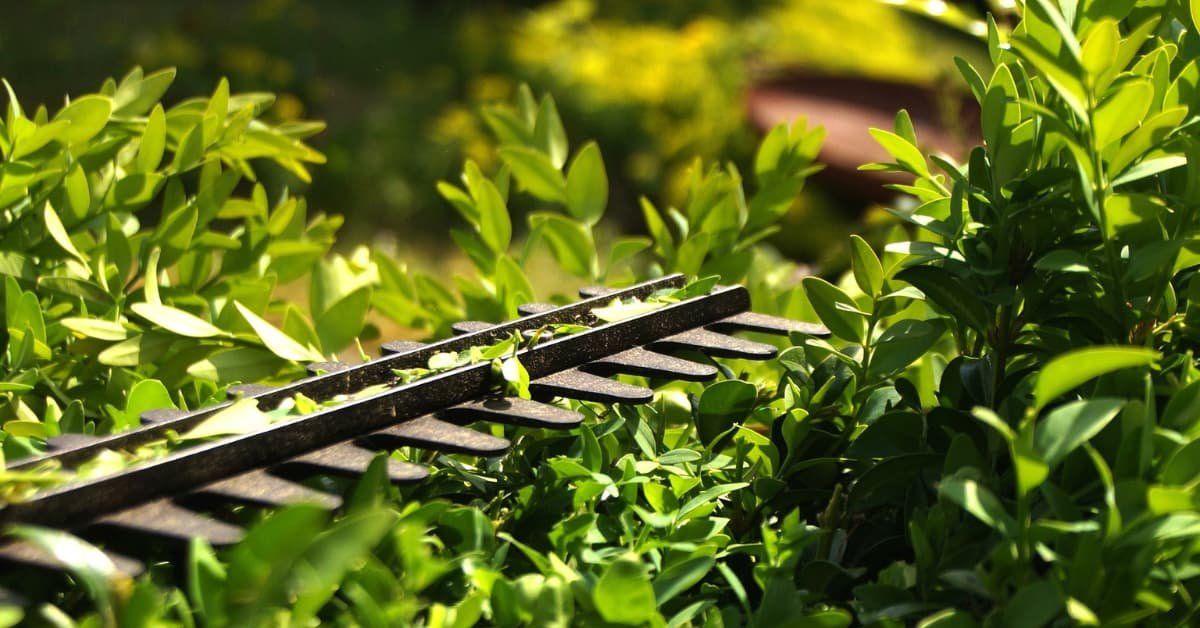
Hedge trimmers are essential tools for maintaining a garden’s overall appearance and keeping hedges in check. However, choosing the right type of hedge trimmer can be a daunting task, especially with the various options available in the market.
The two main types of hedge trimmers are corded and cordless, each with its unique advantages and disadvantages.
Corded hedge trimmers are powered by electricity and require a direct connection to an electrical outlet. They provide consistent power and release zero emissions, making them an eco-friendly option.
On the other hand, cordless hedge trimmers are battery-powered and offer greater flexibility, allowing users to move around freely without worrying about cords or outlets. However, they may not provide the same level of power as corded hedge trimmers and require regular recharging.
Here we will explore the pros and cons of corded vs cordless hedge trimmers to help gardeners make an informed decision when choosing the right tool for their gardening needs.
Short Summary
- Hedge trimmers are essential for garden maintenance and maintaining green spaces
- Corded hedge trimmers have a consistent power supply and emit zero emissions, while cordless trimmers are more portable and easier to use, but have a limited power supply
- Corded hedge trimmers are more heavy-duty and powerful, but limited by the reach of the cord and may sustain wear and tear. Cordless hedge trimmers have a lower maximum power level and require charging before use, but spare batteries can be purchased and have a no-fade supply system built in.
- When purchasing a hedge trimmer, it’s important to check reviews, set a budget, and consider convenience and ease of use. Industrial models may not be necessary for infrequent use.
Corded Vs Cordless Hedge Trimmers
Two types of hedge trimmers are commonly available in the market, corded and cordless, with the former having a consistent power supply and zero emissions, while the latter is portable and easy to use due to its lack of wiring.
Corded hedge trimmers are powered by electricity and are connected to a power outlet via a cord. This constant power supply ensures that the trimmer runs smoothly without any dips in performance. Additionally, corded hedge trimmers do not emit any fumes or gases, making them environmentally friendly.
Cordless hedge trimmers, on the other hand, are powered by rechargeable batteries and do not require a power outlet. They are lightweight and easier to maneuver, making them ideal for small gardens or hard-to-reach areas. However, their battery life is limited, which means that the power output of the trimmer decreases as the battery starts to lose charge. Additionally, the batteries of cordless hedge trimmers need to be charged before use, which may cause some inconvenience to the users.
Comparison of Power
The raw power of hedge trimmers varies greatly depending on their power source, with one type packing a punch that can effortlessly slice through thick branches and the other relying on a more modest output that may require more time and effort to achieve the same results.
Corded hedge trimmers have larger motors and are therefore more powerful than their cordless counterparts, making them ideal for heavy-duty trimming tasks. With a consistent power supply, corded hedge trimmers can handle thick branches and tough hedges with ease. However, their power is limited to the reach of the cord, which may not be ideal for larger gardens. Corded hedge trimmers may also sustain damage due to wear and tear over time, which can affect the durability of the motor.
On the other hand, cordless hedge trimmers are more portable and easier to maneuver, making them ideal for smaller gardens. They don’t emit fumes and have a lower risk of sustaining damage over time due to wiring problems. However, their power output is limited by the battery life, which can decrease as the battery loses charge. Spare batteries can be purchased for cordless hedge trimmers, but this can be an additional expense. Cordless hedge trimmers are also less powerful than corded models, making them less suitable for heavy-duty trimming tasks.
Ultimately, the choice between corded and cordless hedge trimmers comes down to the specific needs of the gardener in terms of power and portability, as well as the size and complexity of the garden.
Portability and Convenience
Portability and convenience are important factors to consider when choosing a hedge trimmer for garden maintenance. Cordless hedge trimmers are generally more portable than their corded counterparts. This is because they do not have cords that can restrict movement and limit reach. Additionally, cordless hedge trimmers are hand-held and lightweight, making them easier to handle and maneuver. This is especially important when trimming hedges that require intricate pruning or when working in tight spaces. However, it is important to note that cordless hedge trimmers require charging before use and their battery life may not be sufficient for large gardens or long trimming sessions.
Weight distribution is another important factor to consider when choosing a hedge trimmer. Cordless hedge trimmers are generally lighter than corded trimmers and have a more balanced weight distribution. This makes them easier to handle and reduces the risk of fatigue or injury during use. Corded hedge trimmers, on the other hand, can be heavier due to the motor and power cord. This can make them more difficult to handle and increase the risk of strain or injury during use.
Ultimately, the choice between corded and cordless hedge trimmers will depend on the specific needs of the gardener and the nature of the garden being maintained.
Battery vs. Corded Performance
When considering hedge trimmers, it is important to evaluate the performance of corded and battery-powered models. Corded hedge trimmers have consistent power and can handle larger jobs due to their bigger motors. They are also more heavy-duty and can withstand wear and tear better than cordless models. However, they are limited by the reach of their cord and can sustain damage if the cord is not properly maintained.
On the other hand, battery-powered hedge trimmers are easy to use and maneuver, making them a great choice for smaller jobs or for those who don’t want to deal with the hassle of cords. However, they do have a limited supply of power and their performance decreases as the battery power wanes. It is important to consider battery life and maintenance requirements when purchasing a battery-powered model. Spare batteries can be purchased for convenience, but it is important to remember that the maximum power output of battery-powered hedge trimmers is generally lower compared to corded models.
Ultimately, the decision between corded and cordless hedge trimmers will depend on the specific needs and preferences of the user.
Factors to Consider When Buying
Before making a purchase, it is crucial to carefully consider various factors that can impact the performance and usability of a hedge trimmer, such as its price, frequency of use, and overall convenience, in order to ensure that it meets one’s specific needs and requirements. To help make the decision-making process easier, here are some key factors to consider:
- Budget: Hedge trimmers vary widely in price, so it’s important to set a budget before making a purchase. Keep in mind that more expensive models often have more features and better performance, but they may not always be necessary for those who only use their trimmers occasionally.
- Frequency of use: Those who use their hedge trimmers frequently may require a more heavy-duty model than those who use it infrequently. It’s also important to consider the size and type of hedges that will be trimmed, as some models may be better suited for certain tasks than others.
- Convenience and ease of use: Hedge trimmers should be easy to use and maneuver, with comfortable grips and lightweight designs. It’s also important to consider factors such as cord length (for corded models) and battery life (for cordless models). Brand recommendations and maintenance tips can also be helpful in making a decision.
FAQs
What is the average lifespan of a hedge trimmer?
The average lifespan of a hedge trimmer varies depending on the brand, model, usage frequency, and maintenance practices. To prolong its lifespan, regular cleaning, lubrication, and proper storage are recommended.
Can corded hedge trimmers be used in wet weather conditions?
Amidst waterproofing concerns, corded hedge trimmers should not be used in wet weather conditions due to safety concerns. Maintenance requirements include drying the tool after use and ensuring all connections are secure and intact.
How long does a typical battery-powered hedge trimmer last on a single charge?
The typical durability of a battery-powered hedge trimmer on a single charge depends on the model and battery capacity. Charging times also vary, with some models taking as little as 30 minutes and others taking several hours.
Can cordless hedge trimmers be used for commercial landscaping purposes?
The pros of cordless hedge trimmers for commercial landscaping include their portability and ease of use, while the cons include limited battery power and lower maximum power level. Battery technology advancements have improved their performance, but they may not be suitable for heavy-duty use.
Is it necessary to wear protective gear when using a hedge trimmer?
The importance of safety and proper maintenance while using a hedge trimmer cannot be overstated. Protective gear should be worn, and the equipment should be regularly maintained to prevent accidents and ensure longevity.



